Question
Who is the husband of V?
Answer the questions based on the information given below : P, Q, R, S, T, U, V and W are sitting around a circle facing the centre but not necessarily in the same order. Each of them has a relationship with P. V is sitting second to the left of father of P. U is immediate neighbor of P. S, mother of P is sitting opposite to the sister of P. Q is sitting to the immediate right of wife of P. T is sitting to the immediate left of sister of P. T who is a male is sitting second to the right of mother of R. Brother of P is sitting third to right of Q. Daughter of P is sitting to third to right of sister of P. P is sitting second to the right of daughter of T. V has two children in different genders.Solution
S, mother of P is sitting opposite to the sister of P. 2. Daughter of P is sitting to third to right of sister of P. 3. T is sitting to the immediate left of sister of P. 4. Q is sitting to the immediate right of wife of P. Brother of P is sitting third to right of Q. Case-1 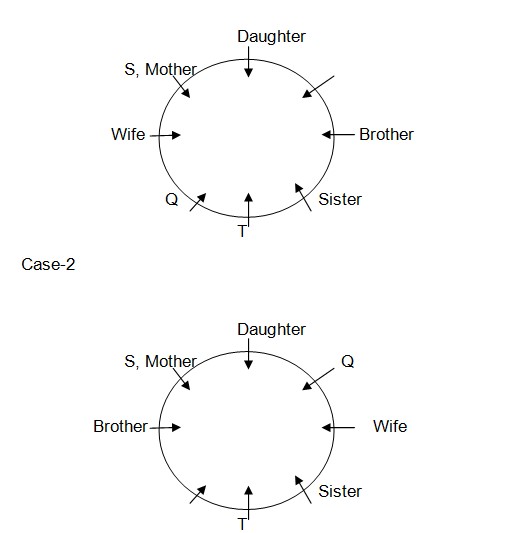
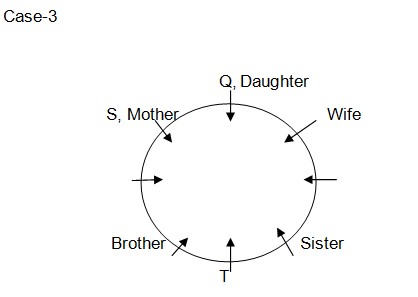 Next we have only 1 position left for placing P in all 3 arrangements as Case-1
Next we have only 1 position left for placing P in all 3 arrangements as Case-1 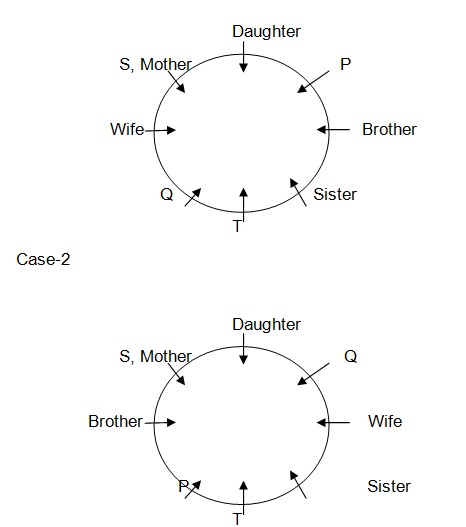
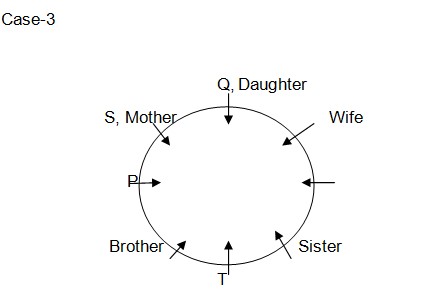 P is sitting second to the right of daughter of T. T who is a male is sitting second to the right of mother of R. V is sitting second to the left of father of P. U is immediate neighbor of P. V has two children in different genders. So final arrangement Case-2 & 3 gets rejected as these both cases were not satisfied with 8th statement (as we know P is a male member) In case-1, P’s sister, P’s brother and P’s daughter were seated apart from Q. This implies Q must be son of P and the blood relation is shown below,
P is sitting second to the right of daughter of T. T who is a male is sitting second to the right of mother of R. V is sitting second to the left of father of P. U is immediate neighbor of P. V has two children in different genders. So final arrangement Case-2 & 3 gets rejected as these both cases were not satisfied with 8th statement (as we know P is a male member) In case-1, P’s sister, P’s brother and P’s daughter were seated apart from Q. This implies Q must be son of P and the blood relation is shown below, 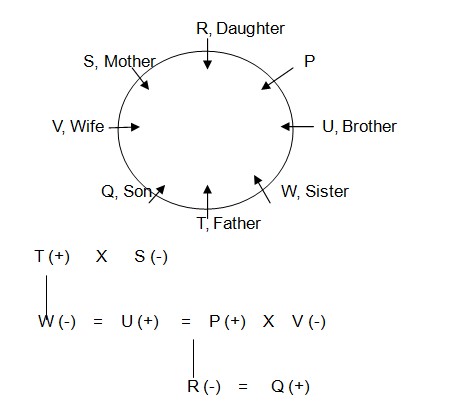
When is International Mind- Bond Wellness Day celebrated?
The Author of 'Madhushala' was?
Who has been appointed as the Managing Director of National Asset Reconstruction Company (NARCL)?
Which Mughal Emperor is also known as 'Zinda Pir'?
What is the percentage of Scheduled Castes in the Total Population of Uttar Pradesh?
Who was the founder of the Arya Samaj?
In which state the World’s first Palm Leaf Manuscript Museum was inaugurated in January 2023?
Consider the following statement/s about Companies Act 2013:
1. It received presidential assent on 29 August 2013.
2. It superseded the Co...
Which country is hosting the 57th ASEAN Foreign Ministers’ Meeting?
Ritesh Agarwal is an Indian entrepreneur and the founder and CEO of which of the following Company?
Relevant for Exams:


